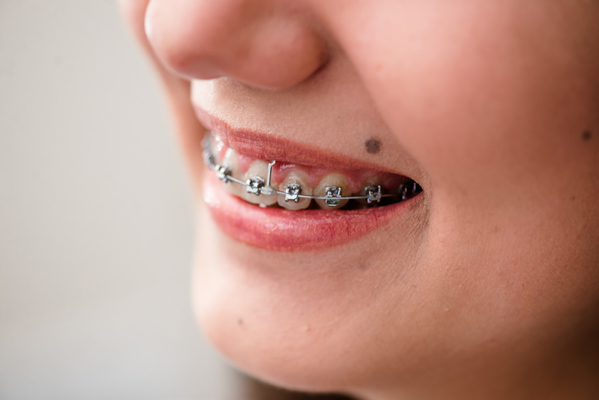Orthodontic Options from a General Dentist for Teeth Straightening Cases

Teeth straightening is a common treatment that dentists offer to enhance one's smile and improve oral health. There are a few different options that one can consider; however, ultimately, the treatment will depend on the severity of the abnormality, the dentist's recommendation, and the goal. Continue reading to learn more about some of the most common teeth straightening options.
Invisalign® and braces for teeth straightening
Outlined below are overviews of both Invisalign® and traditional braces. This information may be helpful for those who are looking into different teeth straightening treatments.
What to know about Invisalign®
Invisalign® has become one of the most popular ways to straighten crooked, crowding, or gapped teeth. These clear aligners are provided in one single piece, whether it be for the top or bottom arch. The material is a plastic base that allows for maximum comfort and flexibility.
General dentists tend to recommend Invisalign® for minor to moderate problems, as opposed to severe ones. Because the aligner is just one single piece, the force that is applied to the actual teeth is far less than other methods, which makes the ability to shift less. Nonetheless, the force applied is still enough for standard teeth-straightening cases.
Every other month, a new aligner in the set of Invisalign® will be provided. The entire series is printed at the start of treatment based on images and scans that predict the shift.
What to know about braces
Braces, on the other hand, have been used for decades as the standard for teeth straightening. General dentists offer both traditional and clear braces to individuals who have minor to severe problems with the teeth. For example, braces can be used for minor teeth-straightening cases, as well as extreme cases that also involve bite correction or jaw re-alignment.
Braces involve the use of brackets and wires, whether they are metal-based or ceramic and plastic-based. The wires are fed through each bracket to force the teeth to shift over time. Every few weeks, the dentist will adjust the wires by tightening them as this encourages the braces to continue forcing a shift.
Other things to keep in mind
When it comes to teeth straightening, it is important to know that even if one desires Invisalign®, the condition at hand may be too severe, which could result in the need for braces. However, in some scenarios, braces can be administered to get the severe shift out of the way. Then, Invisalign® can be worn for a few months to complete the teeth straightening treatment.
Talk to a dentist today
Both Invisalign® and braces are good options for straightening teeth. However, to start the process, it is important to talk to a dentist. The dentist will evaluate the teeth, gums, and jaw to determine what type of treatment is most suitable. From there, any questions or concerns can be addressed and treatment can begin! To find out more about teeth straightening or to get scheduled, reach out today.
Request an appointment here: https://www.vndak.com or call Valley Neighborhood Dental Center at (907) 745-1966 for an appointment in our Palmer office.
Check out what others are saying about our dental services on Yelp: Teeth Straightening in Palmer, AK.
Related Posts
An emergency dentist provides immediate care for urgent dental issues. Dental emergencies can happen anytime, often causing pain or discomfort that cannot wait for a regular appointment. Recognizing the signs of a dental emergency helps patients seek the right care quickly and can prevent further complications and protect their oral health.A dental emergency calls for…
Gum grafting is a procedure that is performed to protect a person's teeth from the effects of gum recession. The procedure can also be performed to improve the appearance of a person's smile.Gum recession occurs when tissues that support and surround teeth begin to pull away from them. It can result in teeth roots being…
A broken tooth does not always count as a dental emergency unless it requires immediate dental care. A broken tooth can be the result of biting into something too hard, especially if the tooth has already been weakened by tooth decay. It can also be caused by trauma to the face or habits like teeth…
Wisdom tooth extraction is often necessary in order to promote good oral health. The procedure can be daunting to some; however, the result is a healthier oral cavity, thus ensuring better overall health. Because wisdom tooth extraction is an involved procedure, it can be helpful to know what to expect beforehand. This allows for the opportunity…
